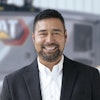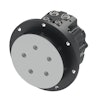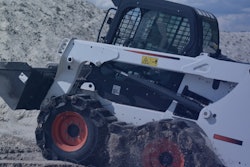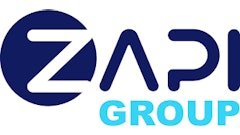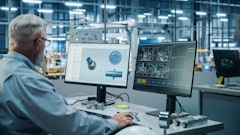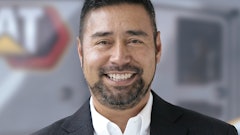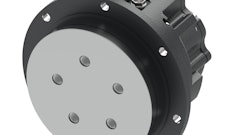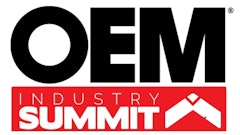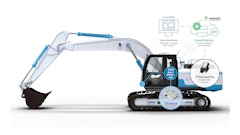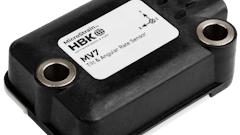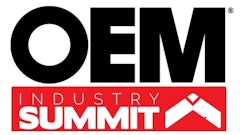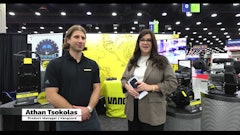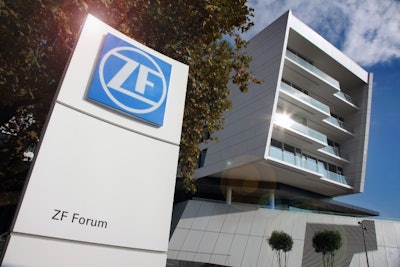
In response to the increasingly challenging situation in the automotive markets, the technology group ZF Friedrichshafen AG is accelerating its restructuring program and strategic realignment. It is also adjusting its production capacities to market needs.
Noting significantly lower sales revenue year over year, the company suggests the decline is primarily the result of its transfer of the axle assembly business unit to the joint venture ZF Foxconn Chassis Modules GmbH.
According to executives, this is the company's most comprehensive and demanding restructuring program in its history.
“We understand that we are making big demands on our people. We are acting with a sense of duty and as socially responsibly as possible. It is also clear, however, that our industry is in a historically challenging position that will make our turnaround difficult," said said ZF CEO Dr. Holger Klein. "But our measures to improve our performance and restructure the company are having an impact. We have achieved higher profit contributions despite decreasing sales revenues. Stagnating global vehicle production, the sluggish ramp-up of electromobility and uncertainty arising from the U.S. tariffs mean lower sales and rising costs. We are addressing these issues and accelerating our restructuring program. This is a tough road, but it’s the right one for ZF.”
Klein stressed that ZF has already taken key steps in line with its “Strengthen our Strengths” strategy, launched in 2023. The company is building up areas with positive long-term prospects such as the Chassis Solutions division, the Commercial Vehicle Solutions and Industrial Technology divisions as well as the services business. Meanwhile, technologies such as autonomous shuttles will no longer be pursued. To become more efficient in all areas, the existing performance improvement programs for cars and commercial vehicles will be combined, transferred into a permanent performance organization and extended to the entire company. Corporate structures will also be reviewed and adjusted. In addition, every product group is being assessed on whether it is earning its capital costs. This will result in further adjustments to the product program.
Structural Adaptations to Be Continued
As part of the structural changes to the company, ZF is assessing options that would create new opportunities for the profitable Electronics and Advanced Driver Assistance Systems (ADAS) division through cooperative relationships or partnerships. “A specific restructuring program is needed for the Electrified Powertrain Technology division to get back on track for success and to ensure our long-term competitiveness and readiness for future challenges,” said CEO Holger Klein. This will include a clear alignment of personnel capacities with future needs, including the assessment of which products can be made cost-efficiently at which location and the decision on which products the company will produce itself or purchase from external suppliers. “We are aware that this will yet again involve painful decisions. We are approaching this process with a strong sense of responsibility to find the best possible solutions for all concerned.”
In the meantime, the operational carve-out of ZF Lifetec, formerly the Passive Safety Systems division, is complete. It is now operating successfully as an independent brand in the market. However, with conditions not ideal for an IPO or a partnership in today’s economic environment, ZF continues to keep all strategic options open for the optimal development of the company and its employees.
Personnel Capacities to Be Gradually Reduced
In July last year ZF announced plans to reorganize its site networks in Germany and adjust its personnel capacities in the face of the foreseeable further weakening in market demand. As of June 30, 2025, ZF employed 157,845 people worldwide, which is more than 2% fewer than at year-end (161,631). In Germany the number of employees also nominally decreased during the same period by 2.6% to 50,683 (end of 2024: 52,027).
In terms of full-time equivalents (FTEs), ZF has reduced its worldwide workforce by 11,200 FTEs since the beginning of 2024, including 5,700 FTEs in Germany. In addition, a further 4,700 FTEs have signed partial retirement agreements or will enter regular retirement. “We are making progress here and will continue to act with the greatest possible social responsibility in this reduction process,” says CEO Klein. Given the highly dynamic market conditions at some locations or in some divisions, however, the possibility of layoffs cannot be ruled out.
Outlook: ZF at IAA Mobility in Munich
Klein also referred to ZF’s presence at IAA Mobility in Munich. ZF will be on-site on the fairgrounds at the Bavarian state capital (Hall A1, Stand D30) from Sept. 9-12, 2025. Among the highlights presented at the ZF stand will be the Chassis 2.0 concept. This is a technological approach that utilizes intelligent and network-capable actuators to enable new, software-driven chassis functions. These functions are largely dependent on ZF’s by-wire solutions, in which especially the brakes and steering functions no longer rely on mechanical connections between the steering wheel and steering gear or the brake pedal and the brakes.
In the hybrid and fully electric drive technology segment, ZF will present the new SELECT e-drive platform, which enables car makers to choose from a wide variety of system and component solutions. Further highlights include the new electric range extender systems that can help to overcome the range anxiety of electric vehicle drivers and a concept from the successful ZF eight-speed automatic transmission that offers improved efficiency and more flexibility for various hybrid platforms.



